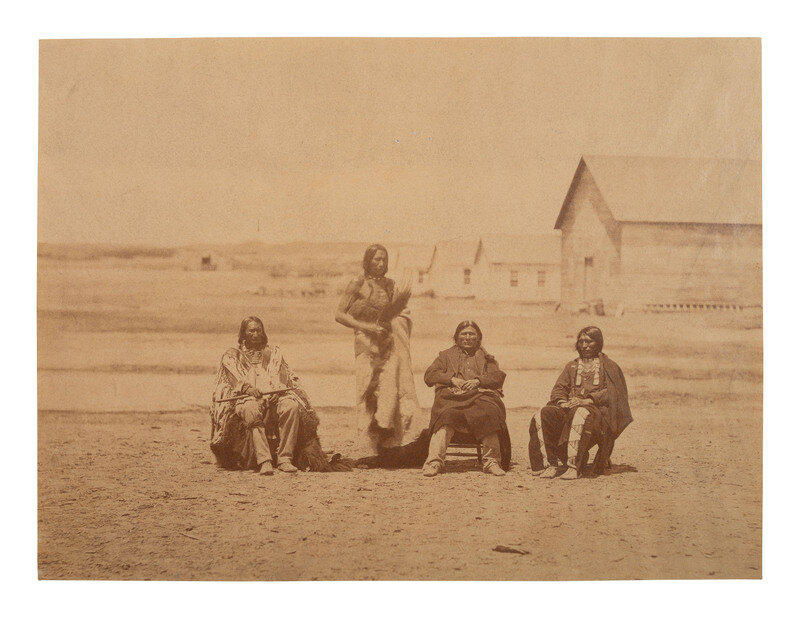Condition Report
Contact Information
Auction Specialist
Lot 242
Sale 6425 - American Historical Ephemera and Early Photography, including The Larry Ness Collection of Native American Photography
Part I - Lots 1-222
Oct 23, 2025
10:00AM ET
Part II - Lots 223-376
Oct 24, 2025
10:00AM ET
Live / Cincinnati
Own a similar item?
Estimate
$2,000 -
3,000
Price Realized
$1,560
Sold prices are inclusive of Buyer’s Premium
Lot Description
[GARDNER, Alexander (1821-1882), photographer]. Albumen photograph of Lakota braves Lone Horn, Pipe, Grass and Young Elk at Fort Laramie.
12 1/8 x 9 in. unmounted albumen photograph, lacking Gardner's credit but known to have been taken by him at Fort Laramie.
A similar image taken from nearly the exact same vantage point, with the same wooden structures in the background, features a larger group of Sioux representatives attending the Treaty conference, including some of the same men as featured here, is published in Katz, D. Mark. Witness to an Era: The Life and Photographs of Alexander Gardner, 249).
After a deadly ambush of Captain William Fetterman's troops by a group of more than 2,000 Sioux along the Bozeman Trail in December of 1866, the United States initiated plans for a treaty conference purposed to "establish peace, define tribunal boundaries, and provide mechanisms for civilizing the Indians," as well as to hold the tribes collectively accountable to American laws. (Katz, 238). The result was the 1868 Treaty of Fort Laramie conference, which consisted of a series of meetings between US officials including peace commissioners and military representatives, and leaders of the Arapaho, Northern Cheyenne, Crow, and Brule, Oglala and Miniconjou Dakota, to negotiate the terms of the Treaty that would guarantee the Lakota ownership of the Black Hills in the Wyoming Territory and end Red Cloud's War. Alexander Gardner, working for the Indian Peace Commission, was the only photographer present at the Fort Laramie Treaty conference. Gardner arrived at Fort Laramie from Washington on 24 April and made photographs between late April and early May 1868.
The conference brought together delegations of several tribes, including women and children, who lived in encampments during their stay at Fort Laramie. Gardner recorded the surrounding scenery as well as daily life in those encampments, along with the negotiations themselves, capturing activities like the distribution of gifts, the slaughter of cattle, women performing household chores, and even children playing. (Nottage, James. "A Treaty in His Lens: Alexander Gardner Photographs Fort Laramie, 1868.")
Gardner departed from the conference with around two hundred negatives, half of which were approximately 8 x 10 views, which would be published as "Scenes in the Indian Country." Journalist Raymond J. DeMallie noted that the immense value of these images lies not only in their documentation of the commissions, but in their being the "earliest surviving photographic records of the Indians of the Northern Pains taken in their own territory." (Katz, 245).
The Larry Ness Collection of Native American Photography
This lot is located in Cincinnati.



